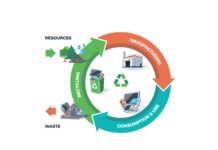
The world today is grappling with several environmental challenges that threaten to undermine the very foundation of human existence. Climate change, air pollution, water scarcity, deforestation, and loss of biodiversity are some of the critical challenges caused by human activities such as industrialization, urbanization, and unsustainable consumption patterns. These activities have far-reaching impacts on the environment and human health, necessitating urgent action to mitigate them. In this article, we explore the critical role of technology in addressing environmental challenges and promoting sustainability.
Environmental challenges and their impacts:
Climate Change
Climate change is a significant environmental challenge facing the planet. It results from the emission of greenhouse gases that lead to an increase in global temperatures, causing more frequent and intense weather events, sea-level rise, and other impacts. These impacts have significant economic, social, and environmental consequences, including crop failures, loss of biodiversity, and damage to infrastructure.
Air Pollution
Air pollution is another critical environmental challenge, particularly in urban areas. Exposure to air pollution can cause respiratory and cardiovascular diseases and increase the risk of premature death. Burning fossil fuels is the primary source of air pollution, making it essential to reduce the use of these fuels to mitigate the impacts of air pollution.
Water Scarcity
Water scarcity affects millions of people globally and is caused by overconsumption, pollution, and climate change. The lack of access to clean water can lead to the spread of diseases and limit economic growth and development.
Deforestation
Deforestation is another significant environmental challenge, particularly in tropical regions. It leads to the loss of biodiversity and habitat for many species, soil erosion, and other impacts.
Role of technology in addressing environmental challenges:
Technology can play a critical role in addressing environmental challenges and promoting sustainability. The following are some ways technology can help:
Renewable Energy
Renewable energy sources such as solar, wind, and hydropower have the potential to reduce the use of fossil fuels and mitigate the impacts of climate change. Technological advancements in renewable energy have made these sources more efficient and cost-effective, making them a viable alternative to fossil fuels.
Energy Efficiency
Energy efficiency measures such as smart grid systems, energy-efficient buildings, and appliances can reduce energy consumption and save money. These measures can also reduce greenhouse gas emissions and improve air quality.
Carbon Capture and Storage
Carbon capture and storage technology can capture carbon dioxide emissions from industrial processes and store them underground. This technology has the potential to significantly reduce greenhouse gas emissions from industries such as power generation and cement production.
Waste Management
Technology can reduce waste and promote recycling. Advanced waste treatment technologies such as plasma gasification can convert waste into energy and reduce the amount of waste sent to landfills.
Smart Agriculture
Technology can help farmers increase crop yields and reduce water consumption. Smart irrigation systems, precision farming, and genetically modified crops are some of the ways in which technology can help to improve agriculture.
Transportation
Electric and fuel-efficient vehicles can reduce greenhouse gas emissions and air pollution from transportation. Technology can also help promote public transportation and reduce the use of personal vehicles.
Role of technology in promoting sustainability (continued):
Smart city technologies such as smart grids, intelligent transportation systems, and energy-efficient buildings can help reduce energy consumption and greenhouse gas emissions, making cities more efficient, sustainable, and resilient.
Circular Economy
Technology can help promote a circular economy, where resources are reused, and waste is minimized. Advanced recycling technologies, such as chemical recycling and biodegradable plastics, can help reduce waste and promote the reuse of materials.
Sustainable Production
Technology can promote sustainable production practices. Digital manufacturing technologies such as 3D printing and additive manufacturing can reduce waste and promote the use of sustainable materials.
Environmental Monitoring
Technology can monitor environmental conditions and provide early warnings of potential disasters. Remote sensing technologies, such as satellite imagery and drones, can help monitor deforestation, wildfires, and other environmental threats.
Conclusion:
In conclusion, technology has the potential to play a critical role in addressing environmental challenges and promoting sustainability. From renewable energy to waste management to smart agriculture, technology can help reduce environmental impacts and promote sustainable practices. However, technology alone is not enough to solve these challenges. It is essential to combine technological solutions with policy changes, education, and individual actions to create a more sustainable future. We must work together to create a more sustainable and resilient planet for future generations.
FAQs:
- How does technology help in reducing air pollution?
- What are the benefits of renewable energy sources?
- How can technology promote a circular economy?
Google News | Telegram















